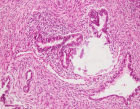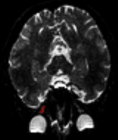Table of Contents
Seasonal change and COVID-19: Will the harmattan season lead to an increase in COVID-19 cases in Nigeria?
Published on: 30th December, 2020
OCLC Number/Unique Identifier: 8796532690
The harmattan season, which is a period characterized by low temperature, dry air and increased air pollution leads to widespread airborne disease and exacerbation of pre-existing conditions, should be recognized as a period of potential risk of high COVID-19 infection rates. This period also coincides with the Christmas season which comes with so many festivities and can become a COVID-19 super-spreader. With many Nigerians now abandoning the non-pharmaceutical protection measures against COVID-19, the harmattan season and the forthcoming spike in social gatherings might usher in the second wave of the virus which can potentially be more catastrophic. There is need for the Nigerian government to start planning and instituting new protection measures and guidelines for safe Christmas celebration while also educating and encouraging the populace to adopt the protection measures recommended by experts.
Spontaneous pneumomediastinum associated with COVID-19: Rare complication of 2020 pandemic
Published on: 17th November, 2020
OCLC Number/Unique Identifier: 8701510922
Spontaneous pneumomediastinum (SPM) is a rare condition, more commonly seen in patients with history of asthma, chronic obstructive pulmonary disease, infections, or drug users. Today, we face one novel virus that has cause an outbreak of acute respiratory illness, affecting over a million individuals worldwide. New knowledge is been gained of the virus and possible complications are been seen. Following, we present the case of a 71-year-old man with diagnosis of COVID-19 pneumonia complicated with spontaneous pneumomediastinum.
General practitioners’ knowledge, attitudes and practices on antibiotic prescribing for acute respiratory infections in children in Lubumbashi, Democratic Republic of Congo
Published on: 16th September, 2020
OCLC Number/Unique Identifier: 8701522218
Objective: To assess the knowledge, attitudes and practices declared among general practitioners (GPs) concerning the use of antibiotics for the treatment of ARI in children under 5 years in Lubumbashi.
Methods: A cross-sectional survey was conducted to assess the level of knowledge, attitude and practices concerning antibiotic prescribing among 67 GPs working in the pediatric setting in various health structures in Lubumbashi city, in the Democratic Republic of Congo. Data were collected from April 1st to June 30th, 2020.
Results: GPs had limited knowledge about antibiotic prescriptions (mean of 46% correct answers to 8 questions). Although they are generally concerned about antibiotic resistance (mean ± SD = 0.50 ± 0.68), and are unwilling to submit to pressure to prescribe antibiotics to meet patient demands and expectations (mean ± SD = –1.78 ± 0.31) and the requirements to prescribe antibiotics for fear of losing patients (mean ± SD = –1.67 ± 0.47), there was a lack of motivation to change prescribing practices (mean ± SD = −0.37 ± 0.94) and strong agreement that they themselves should take responsibility for tackling antibiotic resistance (mean ± SD = 1.24 ± 0.74). Multiple linear regression results showed that higher knowledge scores were associated with less avoidance of responsibility when prescribing antibiotics (β = 0.919; p = 0.000).
Conclusion: To curb the over-prescription of antibiotics, it is not enough to improve knowledge in itself. The lack of motivation of physicians to change must be addressed through a systematic approach. These data show the need for interventions that support the rational prescribing of antibiotics.
COVID-19 disease with persistently negative RT-PCR test for SARS-CoV-2
Published on: 7th August, 2020
OCLC Number/Unique Identifier: 8653632638
Introduction: The disease outbreak of COVID-19 has had a great clinical and microbiological impact in the last few months. In the preanalytical phase, the collection a sample from of a respiratory tract at the adequate moment and from the correct anatomical site is essential for a rapid and precise molecular diagnosis with a false negative rate of less than 20%.
Materials and methods: We conducted a descriptive study of COVID-19 disease with a persistently negative RT-PCR test in patients seen at the National Institute of Respiratory Diseases (INER) in Mexico City in the period of March through May of 2020. 38 patients were registered with negative RT-PCR test obtained through nasopharyngeal and oropharyngeal swabbing. We evaluated the distribution of data with the Shapiro-Wilk test of normality. The non-parametric data are reported with median. The nominal and ordinal variables are presented as percentages.
Results: The average age of our cohort was 46 years and 52.63% were male (n = 20). Diabetes Mellitus was documented in 34.21% (n = 13) of the patients, Systemic Hypertension in 21.05% (n = 8), Obesity in 31.57% (n = 12) and Overweight in 42.10% (n = 16). Exposure to tobacco smoke was reported in 47.36% (n = 18) of the patients. The median initial saturation of oxygen was 87% at room air. The severity of the disease on admission was: mild 71.05% (n = 27), moderate 21.05% (n = 8) and severe or critical in 7.89% (n = 3) of the cases respectively. 63.15% (n = 24) sought medical care after 6 or more days with symptoms. Lymphopenia was documented in 78.94% (n = 30). Median LDH at the time of admission was 300, being elevated in 63.15% (n = 24) of the cases. The initial tomographic imaging of the chest revealed predominantly ground glass pattern in 81.57% (n = 31) and predominantly consolidation in 18.42% (n = 7). The registered mortality was 15.78% (n = 6).
Conclusion: Patients with COVID-19 and a persistently negative RT-PCR test with fatal outcomes did not differ from the rest of the COVID-19 population since they present with the same risk factors shared by the rest of patients like lymphopenia, comorbidities, elevation of D-Dimer and DHL on admission as well as a tomographic COVID-19 score of severe illness, however we could suggest that the percentage of patients with a mild form of the disease is higher in those with a persistently negative RT-PCR test.
Dysfunctional breathing in children
Published on: 30th May, 2020
OCLC Number/Unique Identifier: 8607009162
Objective: Dysfunctional breathing (DB) refers to abnormal patterns of breathing. No gold standard exists for diagnosis. In clinical practice we regularly see children with functional breathing problems. We collected data from this patient group to gain more insight into the characteristics of children with dysfunctional breathing.
Methods: We composed a retrospective, cross-sectional study. The population consisted of children referred to a physiotherapist by a pediatrician due to suspected dysfunctional breathing. Data from 2013-2015 were collected from patient files, selected according to patterns and onset of symptoms, concomitant asthma, Nijmegen questionnaire (NQ) score, maximum exercise capacity and breathing pattern.
Results: A total of 201 patients were included in the study, 66% of whom were female. The mean age was 13.9 years; 26% of the children were overweight. The most frequently reported symptoms were breathlessness, chest pain/tightness and dizziness. Fifty-two percent had a NQ score ≥23, mainly female. Twenty-eight percent of the children scored < p5 for their age on maximum exercise capacity; this proportion was substantially higher among males. Of the total population, 78% scored < p50 for their age. Subgroups with a higher body mass index (BMI) showed lower maximum exercise capacity. Children presenting with pulmonary symptoms were primarily misdiagnosed with asthma.
Conclusion: Dysfunctional breathing is a common cause of respiratory complaints. Most children with dysfunctional breathing have a high BMI and are in poor physical condition, which suggests a clinically relevant comorbidity and possible options for therapy. Children are often falsely diagnosed with asthma; better recognition will decrease unnecessary medication use.Introduction

HSPI: We're glad you're here. Please click "create a new Query" if you are a new visitor to our website and need further information from us.
If you are already a member of our network and need to keep track of any developments regarding a question you have already submitted, click "take me to my Query."



















































































































































